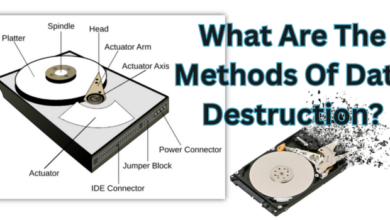Stay secure from spoofing and phishing
Cyber Crimes uses computers to perform crime. It’s pretty natural to imagine how risky it is and the physical damage it could do. Cybersecurity violations are increasing with the passing day, which gives way to hackers into customers’ bank accounts, social media, and clinical records.
The terms ‘phishing’ and ‘spoofing’ are synonymous but have minor differences. Phishing is the act of satirizing licit institutions and using their identity to forward mails for gaining access to delicate information like data, numbers, passwords, and login ids. These emails consist of fake URL links that scammers indirectly operate. Similarly, spoofing attacks are initiated with emails. The emails body displays sensitive threats mentioning “unusual activities has been noticed in your accounts, to prevent it from blocking kindly confirm the password once.” In case of spoofing, some malicious attachments like Trojan Malware, when downloaded, affect the software files, search for them and transfer those to remote servers, by risking the company and its clients. You can know more on Routerlogin.one regarding software files and many more.
Hackers creatively manage to steal IP addresses which are an essential part of online identity. Once the hackers have full-fledged access to our system, they can pull out the necessary information to perform illegal actions.
IP spoofing is often executed in public places with vulnerable WiFi hotspots to gather sensitive data. While using such a network, the malefactor gets access to those data exchanged. By stealing the IP address, the hackers hack and enter into the web with the help of firewalls. DDoS attacks are made by sending requests to multiple servers and receiving responses to the device using the address.
MEASURES TO AVOID PHISHING AND SPOOFING ATTACKS
Staying updated about all phishing techniques
With the development of new attacking methods, the administrators need to train their employees about the scams that aren’t detected. Hackers often study the target and their detailed information through social media networks before getting into action.
Double-check before clicking
Before clicking the multiple links that you receive through emails, think twice. IT nerds suggest re-checking the links and verifying if the URL is similar to the given link. In reality, hackers bait targets with some legitimate links, but these links will land on web pages with different URLs.
Anti-Phishing Toolbar
It would help if you personalized the browsers with anti-phishing toolbars to check prohibited sites in their database. An anti-phishing toolbar acts as a primary source of protection from phishing scams.
Security certification of web pages
The URL Link should start from “HTTPS,” and there should be a padlock icon at the beginning of the address bar. The lock sign symbolizes SSL-certified websites, which are entirely secured web pages.
Firewalls
A firewall works as a layer of security between the user and the hackers. Generally, hardware firewalls are for network protection, and the software protects the desktop. People often have a habit of noting down the passcodes and passwords anywhere they feel she is safe. But these initials are so vital that by any means should be secured and kept hidden from unknown people. By using anti-phishing software designed to avoid the seepage of data, You can connect it easily. Thus, it is better to store the vitals in special folders that You can only open with authorized passcodes, called vaults.
Emails, calls, or text messages that ask for private details like Date of Birth, passwords, CVV, MPIN, or account initials should be carefully ignored. To safeguard oneself, you must adequately authenticate the received messages. It must have some proof related to the sender. Currently, three global protocols, the SPF, DKIM, and DMARC, have helped accomplish the target. About 94% (approx.) malware gets in the system via email.
Firstly, the function of SPF is to verify that the email was sent from an authenticated source by the domain owner but fails in case the email is forwarded further. Secondly, the DKIM issues a unique signature that confirms that the email content was not altered while being delivered. Lastly, the DMARC is at the top of the other two protocols. Therefore, with its in-depth reports, the owner receives complete visibility, security, and control over every sphere.




